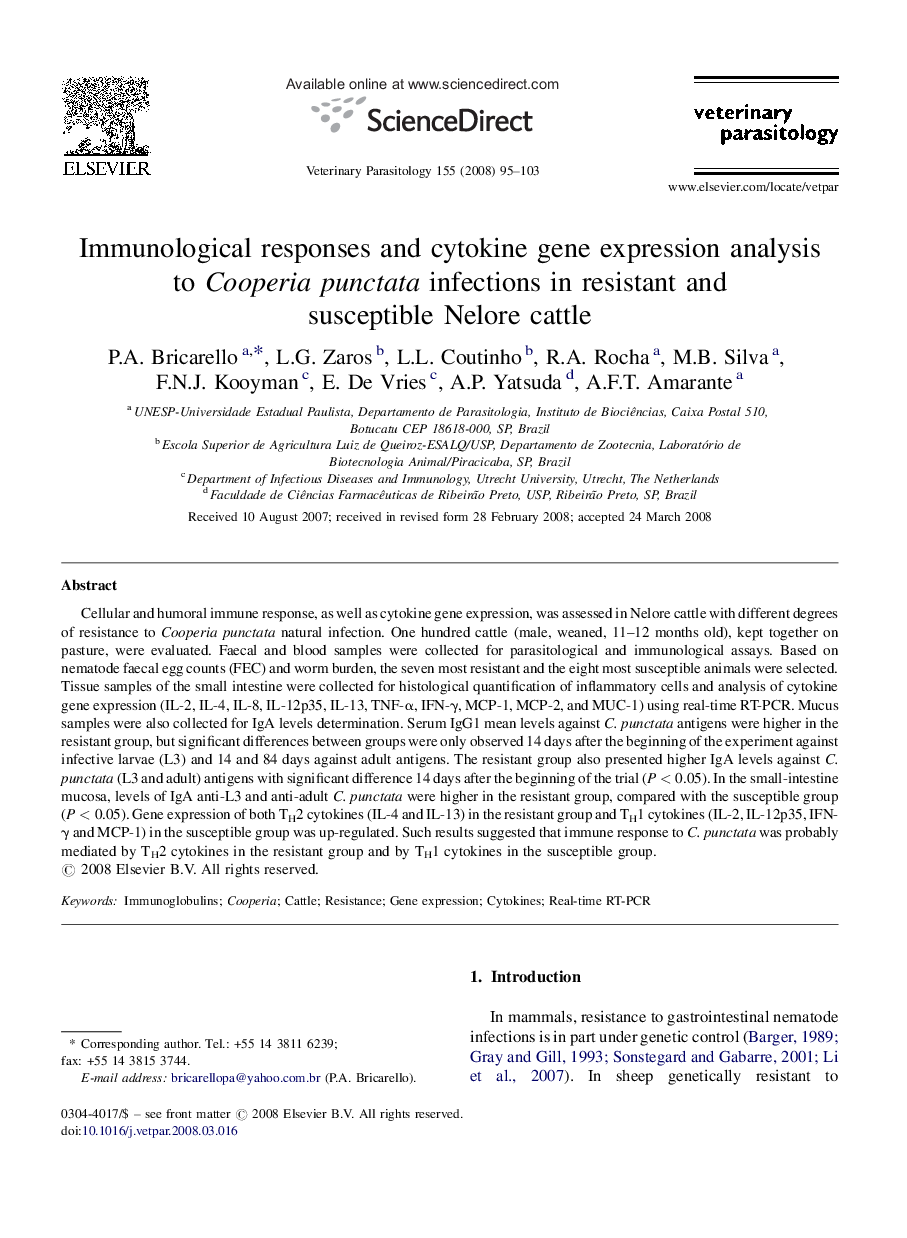| Article ID | Journal | Published Year | Pages | File Type |
|---|---|---|---|---|
| 2471457 | Veterinary Parasitology | 2008 | 9 Pages |
Cellular and humoral immune response, as well as cytokine gene expression, was assessed in Nelore cattle with different degrees of resistance to Cooperia punctata natural infection. One hundred cattle (male, weaned, 11–12 months old), kept together on pasture, were evaluated. Faecal and blood samples were collected for parasitological and immunological assays. Based on nematode faecal egg counts (FEC) and worm burden, the seven most resistant and the eight most susceptible animals were selected. Tissue samples of the small intestine were collected for histological quantification of inflammatory cells and analysis of cytokine gene expression (IL-2, IL-4, IL-8, IL-12p35, IL-13, TNF-α, IFN-γ, MCP-1, MCP-2, and MUC-1) using real-time RT-PCR. Mucus samples were also collected for IgA levels determination. Serum IgG1 mean levels against C. punctata antigens were higher in the resistant group, but significant differences between groups were only observed 14 days after the beginning of the experiment against infective larvae (L3) and 14 and 84 days against adult antigens. The resistant group also presented higher IgA levels against C. punctata (L3 and adult) antigens with significant difference 14 days after the beginning of the trial (P < 0.05). In the small-intestine mucosa, levels of IgA anti-L3 and anti-adult C. punctata were higher in the resistant group, compared with the susceptible group (P < 0.05). Gene expression of both TH2 cytokines (IL-4 and IL-13) in the resistant group and TH1 cytokines (IL-2, IL-12p35, IFN-γ and MCP-1) in the susceptible group was up-regulated. Such results suggested that immune response to C. punctata was probably mediated by TH2 cytokines in the resistant group and by TH1 cytokines in the susceptible group.
